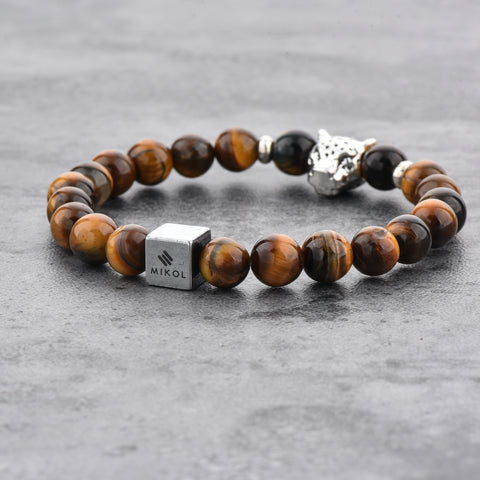
Color Psychology: How to Use Colors to Manage Your Emotions
The importance of mental health can’t be understated; after all, mental health tends to shape how we behave, think, and feel, even if we don’t realize it.
Taking care of mental health is just as important as taking care of physical health. That may seem like a tall request, though, especially if you consistently manage mental health symptoms.
But, did you know that something as simple (yet prevalent) as color can impact your mood and, by extension, your mental health?

Experimenting with colors is a fantastic and easy way to express yourself, change the physical appearance of your home, or encourage a specific emotional response from either yourself or from your family and friends.
You can combine colors with design choices to boost the look of your space - even something as simple as redecorating can create a much more inviting, calming atmosphere.
Of course, as wonderful as color can be, it doesn’t necessarily replace the advice and guidance of a mental health professional. Color psychology and therapy are both present even in professional treatment, so if they’re something you’re interested in, it’s always beneficial to reach out for assistance.
What is color psychology?
Color psychology involves understanding how different colors can impact people in different ways.
For instance, have you ever noticed that certain rooms - particularly those with cooler color schemes - tend to make you feel more at peace? Color psychology seeks to answer these sorts of questions and help you understand how colors impact your overall mood.
Although each color is typically associated with an emotion, people have various interpretations that may alter the meaning of a color.
Red, for instance, may symbolize anger to some, but for others, it can provoke positive memories or light up a space.
How Color Impacts Everyday Life
Color surrounds us, both in the natural world and in our homes. Deliberately seeking out those that make us feel the best can significantly impact our livelihood.
Color therapy in particular associates color with a person’s emotions. These colors are typically broken down into two main categories: warm and cool.
Warm Colors
Red
For most, red is a passionate color. It can provoke intense emotions, including anger, but it can also command an individual’s attention and increase focus.
For instance, when writing, highlighting a phrase or section in red can very easily and successfully direct a reader’s attention to that area. It can also communicate urgency, caution, or act as a warning.
Orange
If you want to feel refreshed and creative, orange is the color for you! Many individuals tend to feel adventurous, excited, or energized when exposed to orange in some way.
Since orange often relates to or inspires images of citrus fruits, people typically think of the color as a symbol of rejuvenation, which makes them feel safe and secure.
Additionally, orange’s association with food could also make you feel a little hungry. Thus, many restaurants utilize orange as part of their marketing initiatives.
Yellow
Representing happiness, clarity, and energy, yellow can help a person feel happier even if something is bothering them.
Children’s advertisements frequently use yellow to grab the attention of their audience because of its bright aesthetic.
Much like red, too much yellow can lead to negative effects. These sorts of colors can feel more intensely stimulating, and constant exposure to them may have the potential to make some individuals feel on edge.
Cool Colors
Blue
Blue is associated with feelings of serenity, peace, and contentment. Many things that are blue in the natural world - the sky, water, etc. - are also related to these feelings, so it makes sense that the color itself may carry this connotation.
Unlike red and similar colors, blue is predominantly calming. Many individuals find that using blue in bedrooms, bathrooms, or other spaces in the home creates a comfortable atmosphere.
Blue can also help combat stressful situations. Try creating a study or work space that incorporates blue in some way - you may be surprised by just how much it can change the “feel” of the area!
Green
The color green is commonly associated with nature and money. Green can symbolize life and vitality, which ties back to nature, but it also commonly relates to personal growth (including financial stability).
By surrounding yourself with green, you may feel more in touch with the world around you and, as a result, more at peace or focused. Green out in the natural world from plants and scenery can also be incredibly calming; even something as typical as taking a walk outdoors can be refreshing.
Different shades of the green can promote various levels of serenity. These sorts of emotions can promote reflection, which can certainly help you better understand and manage stress or other similar emotions.
Purple
The color purple typically helps promote feelings of wisdom, luxury, and creativity. Purple also stands out from other colors by being unique to look at.
When a person sees a rainbow, oftentimes, their eyes are drawn to the purple or violet bands of light. It’s an inviting color that emits feelings of coziness and relaxation.
Interestingly, purple is a mixture of red and blue, thus the color combines the intense feelings of red with the serenity of blue, resulting in a color that helps encourage creativity while also having a sense of mystery.
Conclusion
Color psychology seeks to understand color itself and how it uniquely impacts the mind. By purposefully incorporating certain color schemes into your life, whether in your home or by exposing yourself to nature, you can manage or inspire specific emotions.
Since people’s perceptions of colors differ depending on their upbringing or personal experiences, your personal associations with color may be different than what’s been outlined in this guide.
Experimenting is often the best way to find out what works for you and what tends to produce the best results.
Color therapy or color exposure is perhaps one of the easiest and most accessible ways to begin impacting your mental health for the better.
Leave a comment
Comments will be approved before showing up.





